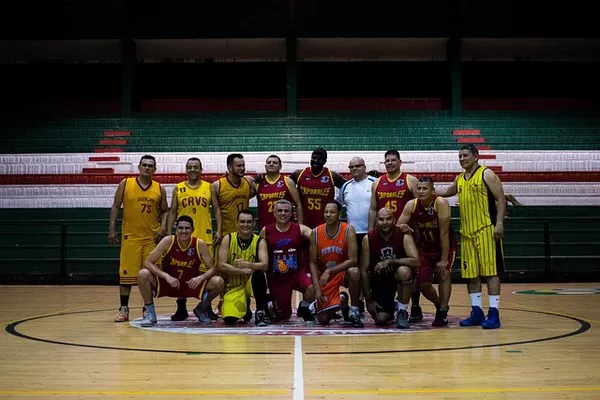In the dynamic realm of basketball, where agility, strategy, and physicality intertwine, the concept of permissible contact between offensive and defensive players often sparks debate. Central to this discourse is the question: Can defenders touch offensive players? Understanding the nuances of contact in basketball is crucial not only for players but also for coaches, referees, and enthusiasts alike. This article delves into the rules governing contact in basketball, clarifying the permissible limits for defenders and shedding light on commonly misunderstood aspects.
The Legal Framework:
At the core of basketball regulations lies the principle of fair play, ensuring a balance between offensive and defensive maneuvers while safeguarding player safety. The rules, as outlined by governing bodies such as FIBA (International Basketball Federation) and the NBA (National Basketball Association), provide a framework to govern player conduct on the court.
According to these regulations, defenders are permitted to employ physical contact within certain boundaries. The key determinant is whether the contact impedes the offensive player’s movement or restricts their ability to make a play. Legal defensive tactics include:
Maintaining a Defensive Stance: Defenders are allowed to maintain a stance in proximity to offensive players, obstructing their path without initiating excessive physical contact.
Verticality: When contesting a shot or defending near the basket, defenders can jump vertically to challenge the offensive player without initiating body contact. This principle, known as verticality, enables defenders to protect the rim without committing a foul.
Defensive Slides: Defenders may engage in lateral movement to shadow offensive players, provided they do not use excessive force or initiate illegal contact.
Hand Check: Light, incidental contact with the hands or forearms is permissible while defending a dribbler, as long as it does not impede their progress or disrupt their ball handling.
Boxing Out: When vying for a rebound, defenders can establish position by boxing out their opponent, using their body to create space without pushing or displacing the offensive player illegally.
Limits on Contact:
While defenders have leeway to employ physicality in their defensive approach, certain types of contact are unequivocally prohibited:
Illegal Screens: Setting a screen with excessive force or moving to impede the progress of the defender without establishing a legal position constitutes an offensive foul.
Hand Checking: Continuous or excessive use of hands to impede the offensive player’s movement or disrupt their dribble constitutes a foul.
Holding or Grabbing: Clutching, grabbing, or holding the offensive player’s jersey, arms, or body is strictly prohibited and constitutes a foul.
Charging: Initiating body contact with an offensive player who has established a legal position constitutes a charging foul, resulting in a turnover.
Flagrant Fouls: Acts of unnecessary or excessive contact, such as striking, elbowing, or tripping an opponent, may result in a flagrant foul and potential ejection from the game.
Officials’ Discretion:
While the rules provide a framework for permissible contact, the interpretation and enforcement of these regulations ultimately rest with the officials. Referees are tasked with assessing the context, intent, and impact of contact on the court, applying judgment to distinguish between legal defensive maneuvers and fouls.
Factors influencing officiating decisions include the degree of force used, the positioning of players, and the potential impact on the flow of the game. Referees must also consider the level of competition, as officiating standards may vary between recreational, collegiate, and professional basketball leagues.
Furthermore, officials may exhibit leniency or tighten enforcement based on the game’s pace, style of play, and competitive intensity. Consistency in officiating remains paramount to ensure fairness and uphold the integrity of the sport.
Coaching and Player Education:
In navigating the complexities of defensive contact, coaches play a pivotal role in educating players on proper defensive techniques and legal boundaries. Emphasizing fundamentals such as footwork, positioning, and anticipation enables players to defend effectively while minimizing the risk of committing fouls.
Players, in turn, must familiarize themselves with the rules governing defensive contact and strive to compete within the confines of fair play. Developing spatial awareness, defensive instincts, and communication skills enhances their ability to anticipate offensive moves and react accordingly without resorting to illegal tactics.
Moreover, fostering a culture of sportsmanship and respect for opponents encourages players to compete with integrity, valuing skill and strategy over physicality.
See Also Exploring Basketball Material: A Comprehensive Guide
Conclusion:
In the realm of basketball, the question of whether defenders can touch offensive players is not a straightforward one. While defenders are afforded latitude to employ physical contact within legal limits, the delineation between legal and illegal maneuvers hinges on factors such as intent, impact, and officiating discretion.
Understanding the rules governing defensive contact is essential for players, coaches, and officials alike, fostering fair competition and safeguarding player safety. By adhering to the principles of fair play, upholding sportsmanship, and embracing the nuances of defensive tactics, basketball enthusiasts can elevate the game while preserving its integrity and excitement.
In essence, the art of defense in basketball lies in striking a delicate balance between aggression and restraint, leveraging physicality within the bounds of legality to thwart offensive advances effectively. As players continue to hone their skills and officials refine their judgment, the dynamic interplay between offense and defense will remain a hallmark of basketball’s enduring appeal.


